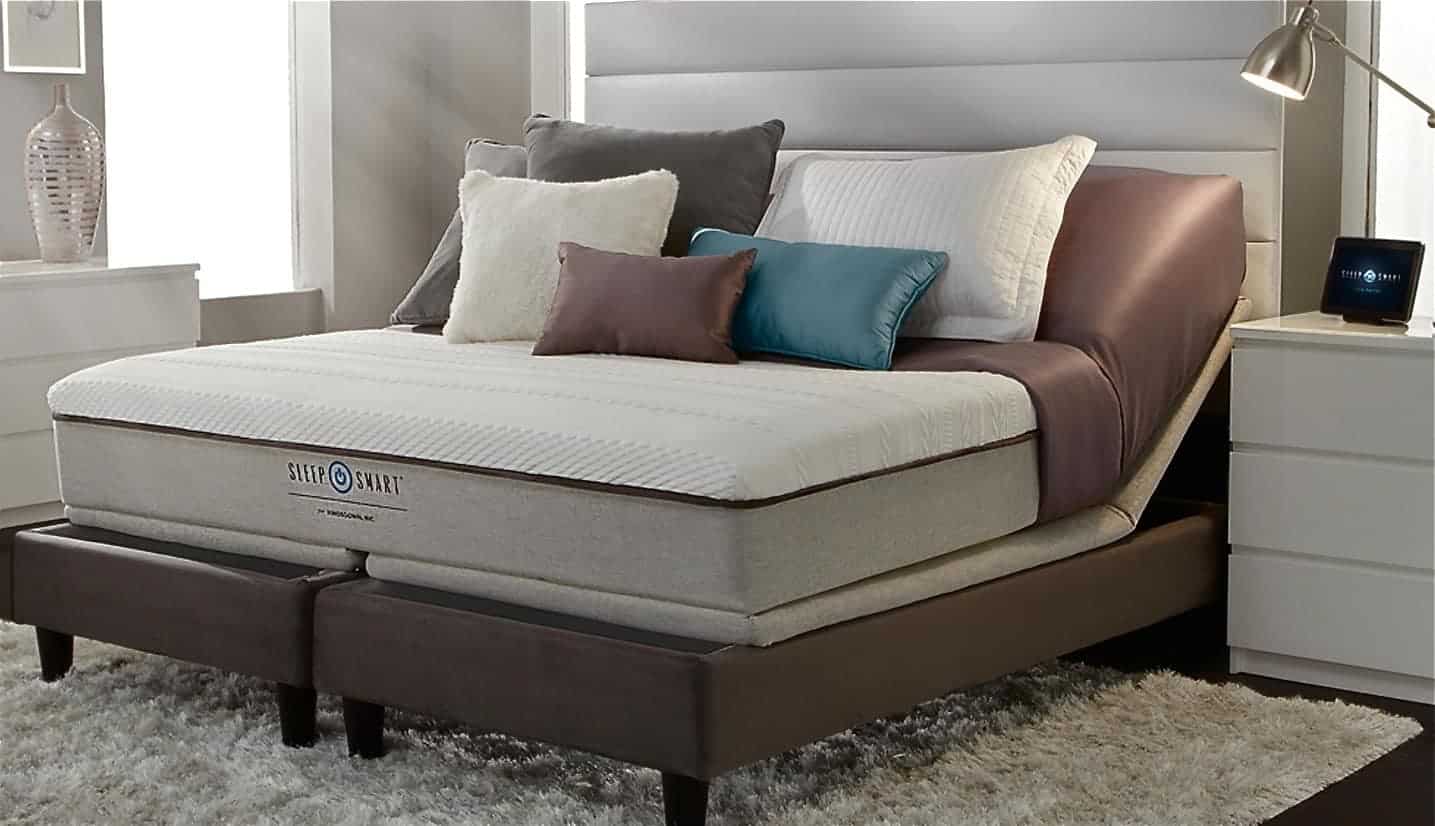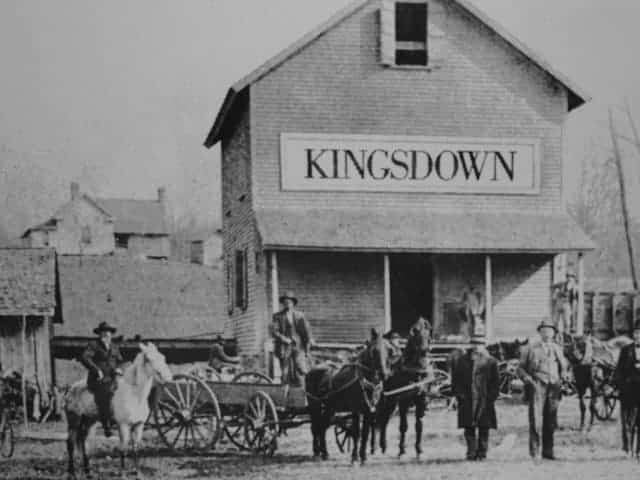
21st century bed Garnered from more than 8 million consumer profiles compiled from Kingsdown diagnostic programs, Sleep Smart brings “interactive technology” to the sleep experience.
BY DOROTHY WHITCOMB
Executives at Kingsdown, a top 15 producer of high-end bedding, like to think of the company that they shepherd as a 110-year-old startup. This dual perspective, they say, grounds them in the history of quality craftsmanship that built the company’s reputation while fostering the innovation that ensures its future.
Innovation at Kingsdown has been guided by a commitment to the science of sleep since the company founded the Sleep to Live Institute (STLI) in 2007. The Institute, located on the campus of Kingsdown’s headquarters in Mebane, N.C., is an independently run sleep lab dedicated to applying research-based science to the complexities of sleep.
The founding of STLI marked a sea change in the way Kingsdown looked at how it manufactures mattresses. The company’s focus, which continues to this day, shifted to identifying ways to enhance the quality of sleep and then building beds to deliver those benefits.
“We’ve been trying to be the company that moves the conversation away from components (and toward) the health benefits of sleep,” explains President and CEO Frank Hood. “I think that this industry is driven a lot by what consumers want. Never before, as in 2013, have there been so many mentions of sleep in the modern media. Medical professionals and consumers, particularly Millennials, are (focused on) sleep, diet and exercise.”
The conversation began in earnest in 2007 when Kingsdown introduced its Sleep to Live brand, beds that were scientifically designed from information gathered through customers’ in-store body mapping sessions. Now called bedMATCH, that diagnostic system uses more than 1,000 calculations tied to 18 statistical measurements to determine the sleep surface that provides the best postural support and pressure relief for individual sleepers, company officials say.
The brand took off rapidly and quickly began to contribute up to 75% to the company’s annual sales. By 2009, however, innovations from other manufacturers began to draw attention away from Sleep to Live.
Kevin Damewood, executive vice president of sales and marketing, joined Kingsdown that year.
“By 2009, a lot of other innovations had come on the scene and foams were the new shiny thing,” says Damewood. “Half of our company was devoted to the Kingsdown brand and half to Sleep to Live, and we were going from being a successful niche business to becoming less relevant.”
Damewood initiated a comprehensive study of changes in the bedding industry, including the effect of consolidation at both the wholesale and retail levels. Using research presented by the International Sleep Products Association, Damewood set out to analyze the percentage of the bedding industry that was focused on each price point and on each type of construction.
He also spoke to retailers and evaluated their concerns.
“I found that retailers were very concerned about consolidation on the wholesale side and wanted to find a good Plan B,” he says.
Then Damewood asked retailers, who were not Kingsdown customers, a simple — but central — question. “I asked: ‘Who are we?’ and there were no good answers,” he says.
Kingsdown executives got the message. If the company was to remain relevant in a changing industry, it was once again time to reinvent itself.
Damewood’s research led the way. Retailers had told him that they wanted to do business with a company that offered alternatives to the market giants, and Kingsdown set out to give them what they wanted. That meant diversifying the company’s product portfolio in meaningful ways.

Affordable luxury The 18 models of the popular Passions collection feature a variety of innovative materials, modern styling and support — all priced to appeal to the masses, including the younger consumer.
The company brought Sleep to Live into its Kingsdown brand and further expanded the brand to include eight categories of passive mattresses.
“Each new category was designed to compete against (products from) a specific company and all are step-up stories in terms of styling and construction,” Damewood says.
The line opens with Kingsdown Passions, with prices that range from $599 to $1,999 in queen size, and tops out with Kingsdown Haute Couture at $9,999 to $25,999.
The 18-model Passions collection features high-density, wrapped coils topped with gel-engineered components. Haute Couture, Kingsdown’s newest passive offering, features three rows of vertically stacked and zoned wrapped coils topped with latex or visco foam.
“Haute Couture offers a whole new feel,” says Damewood. “It almost feels buoyant, and its construction greatly reduces body impressions.”
The Tradition, Sleeping Beauty, Select and Blu-Tek collections were also designed to go head-to-head with competitors’ luxury brands. With prices that range from $1,999 to $9,999, Tradition features a variety of latex constructions, overstuffed borders, silk, cashmere and Joma wool. Sleeping Beauty is a gel component line that includes models with poured gel lumbar support and gel infused memory foam. Sleeping Beauty prices range from $1,999 to $4,999.
Select, the company’s foam core line, uses ventilated, visco-elastic foam and latex blends for support and pressure relief. Mattresses, which feature flocked velvet ticking, sell for $1,999 to $6,999.
Blu-Tek layers perforated, gel-infused memory foam on top of a progressive foam core. Both the edge support system and ticking are ventilated to draw heat away from sleepers, Damewood says. Prices for the contemporary-styled line range from $1,499 to $3,999.
Sleep to Live offers both innerspring and foam options with four different pressure relief and support feels per price point. Beds in this category range in price from $1,299 to $3,999.

110-year history Originally named The Mebane Bedding Company, the company’s name was changed to Kingsdown in the 1970s to reflect the most popular mattress—the Kingsdown. Here, employees pose in front of a Mebane, N.C., mill where the Kingdsdown mattresses were produced.
The company also offers a children’s collection, Kingsdown Kids, in twin and full sizes at prices that range from $299 to $599 in twin. A strong private label program, targeted at the luxury market, offers beds from $1,299 to $29,999.
“Being a narrow brand worked for a while, (but) we aspire to be a $300 million company,” says Hood. “We believe that we are more relevant and efficient now than we’ve ever been, and our quality, based on our return rate, is at its highest.”
Kingsdown ensures consistent quality by testing and measuring every bed it produces through a system it calls Inline Comfort Support Analysis (ICSA).
“We take a high-end product and add value to it through diagnostic and measuring systems that are linked throughout the world,” Hood explains.
Much of the current buzz about Kingsdown centers on the company’s new Scientific Measurement and Response Technology (SMART), which was introduced to the market in December 2013. Kingsdown has incorporated the new technology into two models of its newly launched Sleep Smart beds.
These “interactive” beds track “shifting weight, movement, and size (through) changes in pressure on air bladders in the bed,” Dr. Robert Oexman, director of the Sleep to Live Institute, explains.
Sensors then trigger the bladders to slowly expand or contract to maximize comfort and rest. A built-in data tracker reports on the amount of time slept, the quality of sleep and changes in sleep patterns over time. An optional app, available for both Apple and Android users, allows sleepers to create personal profiles.
The Intuitive model, a hybrid of foam, air and pocketed coils, retails for about $7,999. Progeny, an air-only model, sells for about $3,999. An adjustable base with integrated Bluetooth technology is available for $1,999.
Oexman sees nothing but potential for this type of technology.
“Before, a mattress was a passive thing that we lay our body upon and that’s as good as it got,” he says. “Now, just by looking at how we’re sleeping we can learn about our health, measure blood pressure, or change the environment of a room. I guarantee that this type of technology is going to take off, and that we’re not going to be the only company doing it.”
Sharing Oexman’s expertise directly with RSAs is part of Kingsdown’s multi-prong strategy to “engage retailers in a unique selling process that allows them to differentiate themselves,” Hood explains. Oexman trains all new RSAs at Sleepy’s, the 800-store chain, on sleep-related topics, and is available to other retailers by request.
Kingsdown has also placed its bedMATCH diagnostic system in “upward of 1,000 store doors,” Damewood says. When the company first introduced the system five years ago, it only recommended Kingsdown products. That has changed.
“We recognized that was a bit of a problem for retailers,” says Hood. “If they believe in the system, then it should recommend all products on the floor that fit a customer’s body type. Now the system is a roadmap to the floor that they can sell off and (has become) relevant to 90% of the customer base rather than 20%.”
Company executives also believe that their brand of “gorilla marketing” gives retailers carrying Kingsdown products an edge that other companies can’t match. Indeed, the sheer numbers of media impressions in which Kingsdown, Sleep to Live or Oexman are named are impressive.
“Year-over-year media impressions are growing dramatically,” says Hood. “In 2011 there were 72 million, in 2012, 1 billion, and in 2013 over 2 billion.”
Although growing its domestic footprint has been a priority for the last few years, Kingsdown has not taken its eye off international opportunities. The company currently has nine international licensees in Europe, Asia, the Middle East and South America, and expects to add to that roster in the first quarter of this year. Airland, its Chinese licensee, operates My Side stores throughout the country and Kingsdown stores are scheduled to open in Singapore later this year.
A contract manufacturing facility in England and four in Australia help Kingsdown supply retailers in Europe and Asia. Six company-owned manufacturing facilities in the U.S. supply North America.
“All of our domestic plants have the capability of making all of our products (so) there is no place in the U.S. that is not touchable by Kingsdown,” Hood says.
As Kingsdown executives look to the future, they see new frontiers in which consumer demand and technological advances continue to drive the bedding industry away from commoditization and toward ever more advanced health-enhancing products.
Oexman sums it up this way: “The tide is shifting. I can see a day when retailers will guarantee that consumers will get a better night’s sleep based on measurement and analysis, and consumers will say: ‘You’ve made me this promise and now I can measure it.’”





